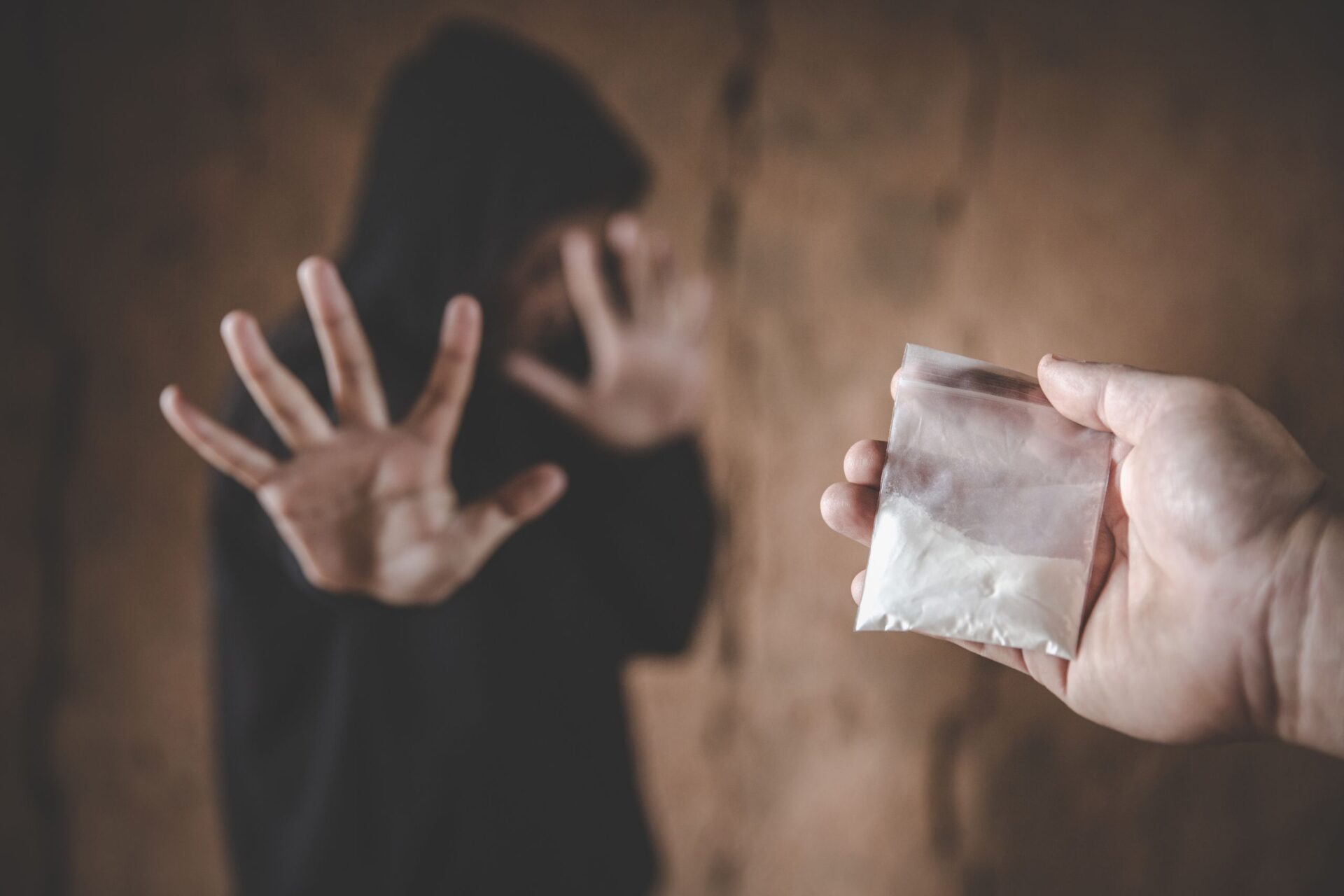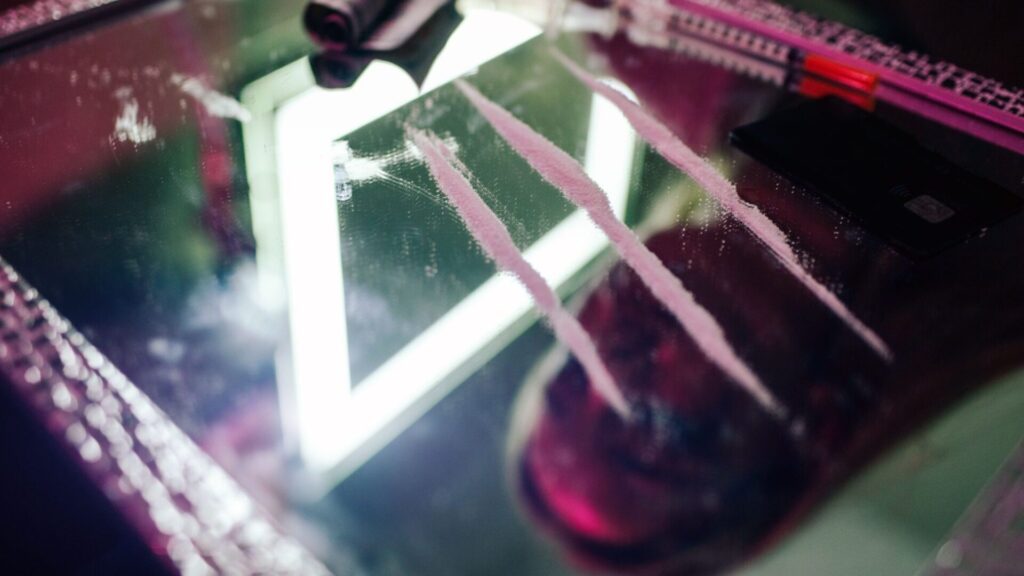
In recent years, a new and dangerous drug has emerged on the recreational drug scene, commonly referred to as Pink Cocaine. This substance has garnered significant attention due to its vibrant color and potent effects. This article aims to provide a comprehensive overview of Pink Cocaine, detailing what it is, its effects, origins, addiction potential, and the importance of seeking help if needed.
If you or a loved one is struggling with substance abuse, reach out today by heading to our admissions page or calling us now.
What is Pink Cocaine?
Pink Cocaine, often known as “Tucibi” or “2C-B,” is a synthetic drug that falls under the phenethylamine class of psychedelics. Despite its name, it is not derived from the coca plant like traditional cocaine. Instead, it is a chemically manufactured substance designed to mimic the effects of both hallucinogens and stimulants, typically found in the form of a pink powder or pill.
One critical aspect of Pink Cocaine is its highly variable composition. Due to the lack of manufacturing standards, the ingredients can differ widely from one batch to another, making it extremely unpredictable and dangerous. According to a 2024 Salon article, the drug often comprises a mix of leftover substances dyed pink to make it marketable.
From 2019 to 2022, the harm reduction organization Energy Control analyzed 150 samples of Pink Cocaine and found that 44% contained a combination of ketamine, MDMA (ecstasy), and caffeine. Only two samples contained actual cocaine. Additionally, most samples included a dye that gave the drug its distinctive color.
A 2023 article in The American Journal of Drug and Alcohol Abuse reported that common ingredients in Pink Cocaine include ketamine, MDMA, methamphetamine, cocaine, opioids, and new psychoactive substances. Other analyses have detected amphetamine, LSD, mescaline, and various benzodiazepines in samples of Pink Cocaine.

Effects of Pink Cocaine
The effects of Pink Cocaine, also known as “Tucibi” or “2C-B,” can vary widely due to its unpredictable composition. Users may experience both positive and negative effects, heavily influenced by dose, individual tolerance, and the environment.
Positive Effects:
- Euphoria and Increased Energy: Many users report heightened mood, increased energy, and a sense of euphoria.
- Visual and Auditory Hallucinations: Vivid visual and auditory distortions can make users feel detached from reality.
- Enhanced Sensory Perception: Users may notice intensified sensory experiences, such as brighter colors and heightened sounds.
- Increased Sociability: The drug often leads to enhanced sociability, making users more talkative and confident.
- Pleasurable Physical Symptoms: Depending on the specific substances in the drug, users might experience effects like sedation, elevated mood, euphoria, enhanced perceptions, increased empathy, numbness to pain, and temporary amnesia.
Negative Effects:
- Physical Symptoms: Increased heart rate, elevated blood pressure, nausea, and sweating are common.
- Anxiety and Paranoia: The drug can induce anxiety, paranoia, and agitation.
- Severe Health Complications: High doses can lead to cardiovascular problems and psychosis.
- Substance-Specific Effects: Depending on the contents, users might experience:
- Methamphetamine or Cocaine: Increased wakefulness, energy boost, elevated confidence, rise in body temperature, decreased appetite, and rapid breathing.
- Benzodiazepines: Diminished inhibitions, sleepiness, stress relief, impaired coordination, disorientation, and blurred vision.
Dangers:
- Dissociation: A sense of detachment from one’s body or surroundings.
- Hypertension and Hyperthermia: High blood pressure and elevated body temperature.
- Dehydration: Due to increased physical activity and reduced awareness of fluid needs.
- Organ Damage: Potential damage to the liver and kidneys.
- Physical Injuries: Impaired coordination and cognition can lead to accidents.
- Cardiovascular and Respiratory Issues: Increased risk of cardiovascular damage and breathing problems.
- Increased Risk of Assault and Disease Exposure: Poor judgment and impulsivity may lead to unsafe behaviors, increasing the risk of assault and exposure to diseases like HIV/AIDS and hepatitis.
- Mental Health Issues: Anxiety, paranoia, hallucinations, panic attacks, psychosis, seizures, and loss of consciousness.
- Fatal Risks: In severe cases, use of this form of cocaine can result in death.
The unpredictable nature of Pink Cocaine, often containing a mix of harmful substances, underscores the importance of recognizing its potential dangers and seeking help if needed.
Where Does Pink Cocaine Come From?
Pink Cocaine, also known as Tucibi, originated in the underground drug market of Medellin, Colombia. Initially gaining popularity in South America, it quickly spread to Europe and Central America before reaching the United States. Produced in illegal laboratories, this synthetic drug is often distributed at parties and raves for its euphoric and stimulating effects. Its ease of manufacturing, independent of any specific natural resources, allows it to be made virtually anywhere.
Is Pink Cocaine Addictive?
Yes, Pink Cocaine has the potential to be highly addictive. The combination of its euphoric and hallucinogenic effects can lead to repeated use and dependency. Users may develop a tolerance, requiring higher doses to achieve the same effects, which increases the risk of overdose. The addictive nature of Pink Cocaine is similar to other stimulants and hallucinogens, where the psychological craving for the drug can be intense and difficult to overcome.
Call Us At Lake Avenue Recovery In Massachusetts For Support
Understanding the dangers of Pink Cocaine is essential in combating its spread and protecting public health. This synthetic drug poses significant risks due to its unpredictable effects and high addiction potential. If you suspect someone is using Pink Cocaine or if you need help yourself, it’s crucial to seek professional help.
If you or someone you know is struggling with Pink Cocaine addiction, Lake Ave Recovery in Massachusetts offers comprehensive addiction treatment programs designed to address the unique challenges associated with synthetic drug abuse. Our team of experienced professionals provides personalized care, combining therapy, counseling, and medical support to help individuals achieve lasting recovery. Call us today or head over to our admission page to learn more. Together, we can work towards a healthier, drug-free future.
